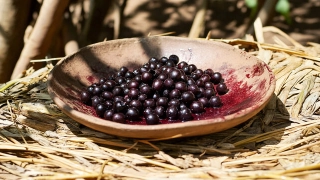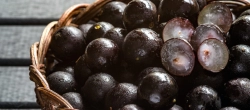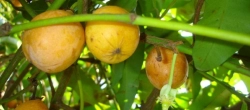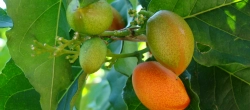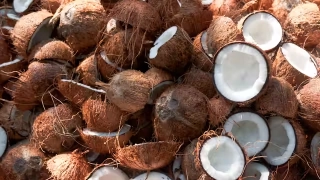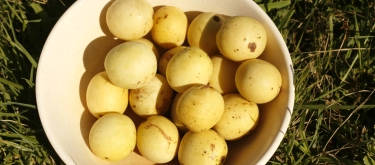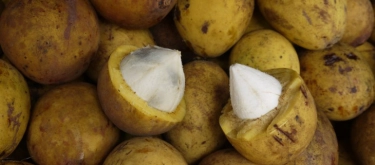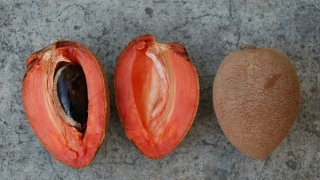Astrocaryum (Tucuma Palm): Taste Profile, Aroma, Benefits and Health Risks
Astrocaryum, commonly known as tucum or tucuma palm, is a tropical palm native to the Amazon rainforest. The fruit of the tucuma palm is prized for its bright orange pulp, rich in healthy fats and a unique flavor profile that combines elements of both nutty and fruity characteristics. Tucuma fruit is a staple in Amazonian cuisine and is gaining popularity for its high content of essential fatty acids, vitamins, and antioxidants. This article explores the flavor characteristics of the tucuma fruit, its culinary uses, health benefits, and tips for selecting and storing it.
What does Astrocaryum (Tucuma Palm) taste like?
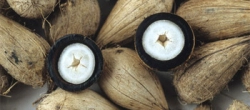
Primary Flavor Characteristics
Tucuma fruit has a distinct flavor that can be described as a combination of fruity and nutty notes. Its taste is often compared to a blend of apricot and almond, with a creamy texture that adds richness to dishes. The fruit has a mild sweetness with earthy undertones, making it versatile for both sweet and savory culinary applications.
Aromatic and Taste Nuances
Tucuma has a light, tropical aroma with hints of nuts and a subtle earthiness. The pulp’s bright orange color and slightly oily texture contribute to its creamy, buttery taste and mouthfeel, which enhances its use in various recipes.
Scientific Description of Taste and Aroma
- Aroma: Lightly tropical with nutty and earthy notes.
- Taste: Mildly sweet, with hints of apricot and almond.
- Texture: Creamy and slightly oily, with a smooth pulp.
Culinary Uses of Astrocaryum (Tucuma Fruit)
Primary Uses
- Fresh Consumption: Tucuma can be eaten fresh, with its creamy, nutty flavor enjoyed as a tropical snack.
- Smoothies and Juices: The pulp is often blended into smoothies and tropical drinks, adding a creamy texture and rich flavor.
- Sauces and Purees: Tucuma’s creamy pulp is used to create rich sauces, dips, and purees, ideal for pairing with meats and vegetables.
- Desserts: The fruit is used in ice creams, puddings, and pastries, where its unique flavor adds depth.
- Oils and Butters: Tucuma oil, derived from the fruit’s seeds, is used in cooking and has applications in skincare due to its high fat content and nourishing properties.
Ideal Pairings for Tucuma
- Tropical Fruits: Pineapple, mango, and coconut enhance tucuma’s tropical flavor and add sweetness to smoothies and desserts.
- Spices: Cinnamon, nutmeg, and vanilla add warmth to tucuma-based desserts and baked goods.
- Citrus: Lemon and lime add acidity to balance tucuma’s creamy texture and mild sweetness in beverages and sauces.
- Nuts and Seeds: Almonds and cashews complement tucuma’s nutty undertones, creating a rich, complex flavor.
- Chocolate: Dark chocolate pairs well with tucuma, adding a slight bitterness that contrasts with its natural sweetness.
Health Benefits of Astrocaryum (Tucuma Fruit)
Key Nutrients and Benefits
- Essential Fatty Acids: Tucuma is rich in healthy fats, including omega-3 and omega-6 fatty acids, which support cardiovascular health and skin hydration.
- Vitamin A and Beta-Carotene: The high beta-carotene content in tucuma promotes eye health, immune function, and skin vitality.
- Antioxidants: Tucuma contains antioxidants that help protect cells from oxidative stress and reduce inflammation.
- Dietary Fiber: High in fiber, tucuma supports digestion and helps maintain stable blood sugar levels.
- Vitamin E: Known for its skin benefits, vitamin E in tucuma aids in cellular repair and moisture retention.
Potential Precautions
- High Caloric Density: Due to its high fat content, tucuma is relatively calorie-dense, so it is best enjoyed in moderation.
- Allergy Concerns: Those with nut allergies may need to exercise caution, as tucuma has a nutty flavor profile and may cause mild reactions in sensitive individuals.
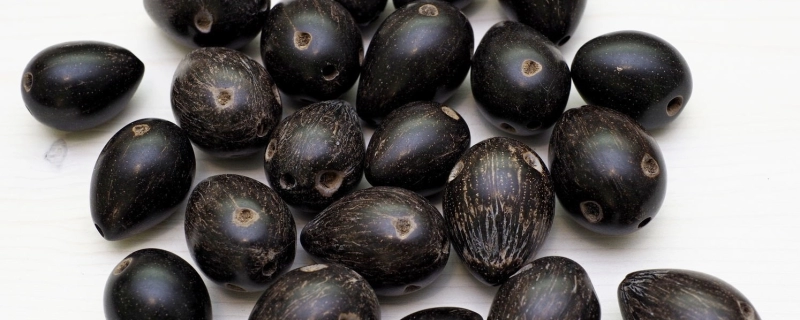
Tips for Choosing and Storing Tucuma
How to Choose Quality Tucuma
- Color and Firmness: Choose fruits with a deep orange color and slightly soft texture, indicating ripeness.
- Aroma: A ripe tucuma will have a mild tropical scent, hinting at its creamy, nutty flavor.
Storage Recommendations
- At Room Temperature: Store unripe tucuma at room temperature until it softens slightly.
- In the Refrigerator: Once ripe, tucuma can be kept in the refrigerator for up to a week to maintain freshness.
- Freezing: The pulp can be scooped out and frozen for use in smoothies and sauces, preserving its creamy texture and nutritional benefits.
Fun Facts About Astrocaryum (Tucuma)
- Amazonian Staple: Tucuma has been a staple in the Amazon region for centuries, used for food, cosmetics, and medicinal purposes.
- Skin Care Benefits: Tucuma oil, rich in vitamins and fatty acids, is commonly used in skincare for its moisturizing and rejuvenating properties.
- Sustainable Harvesting: Tucuma palms are valued for their environmental resilience, helping prevent soil erosion and supporting biodiversity in the Amazon rainforest.
